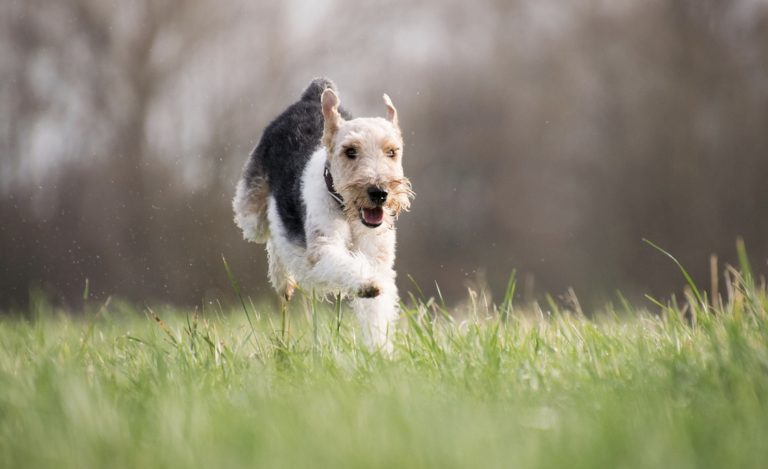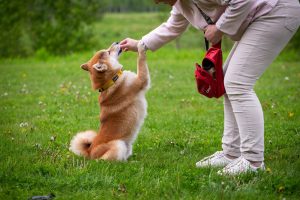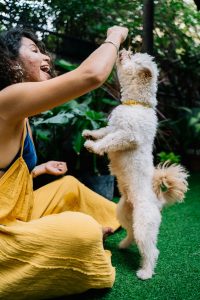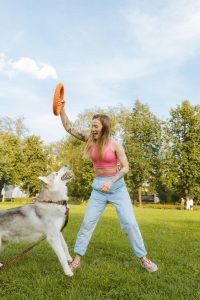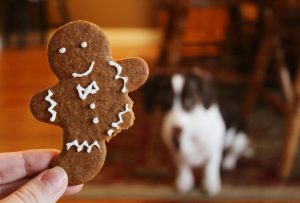Teaching your dog the come command is one of the most important things in dog training. It is an essential command so that your dog can play free, without any leash. Reliable recall training for dogs is essential so that your dog can enjoy its life leash-free.
How to teach your dog to com when called? Well, I have talked about dog games you can play to get a good recall, some dog recall tips, and more.
Today, however, we will talk about some different ways to teach your dog to come. Hopefully, these training tips can help you have a reliable dog.
When to teach recall with verbal cue?
Training your dog to come should start as soon as you get your puppy. Remember, your young puppy will follow you everywhere in the beginning. It is not like with an older dog or adult dog.
Your young puppy should learn to stay on a leash and progress to long leash and off-leash recall from 4 months to 12 months.
By the time your pet is 6 months old, it should respond to recall cue and recall command on a leash and on a long leash. By 12 months, you can expect good recall in an off-leash situation.
The purpose of recall is to have a partner, a dog that will follow you and look at you for guidance and leadership.
And the best part is, when your puppy is young, you do not have to do much. Your young puppy already follows you everywhere. All you have to do is offer verbal praise and treat reward every time your dog comes to you. Believe me, this will be often.
Recall Guidelines
Before we get to some of the different ways of recall training for dogs, let me give you some guidelines.
- Do not use a harness when teaching recall cue and recall command. Your puppy should have only a flat collar
- Have food reward ready for your puppy. It can be dog food or kibble, high-value treat, or small treats
- Try to be the most exciting and important thing in your puppy’s environment. Don’t be the boring dog owner
- When you call your puppy, use a calm and enthusiastic voice
- Praise your dog for coming every time, and be even more enthusiastic about it
- Do not call your dog to correct or discipline him. Recall should always be positive. The big mistake owners make is they discipline their puppy after coming back. It creates a negative association with coming back
- Do not run after your dog
- Never lunge for or grab your puppy
- Do not call your puppy if you are going to do something they do not enjoy, like giving a bath, trimming their nails, or something similar. Always try to create a positive experience with coming back to you
Different ways to teach recall
On-leash recall
Personally, I suggest starting with off-leash recall, because the leash can become a block, a barrier for many people. You get used to it, and never want to risk off-leash training. You can do off leash dog recall training at home, in your living room.
With that in mind, here is how to do some dog training on-leash for recall.
- Have your puppy on a leash and make one or two steps away from it
- Wait for your puppy to come, and reward with verbal praise and treat
- In the beginning, your dog will probably come without even giving a verbal command
- If your puppy doesn’t come, call it by his dogs name
- Give a treat, move away a few steps, and repeat the exercise again
- Always start practicing in a familiar environment with no distractions and allow your puppy to wander. Then call your dog
- If your dog makes an attempt to move toward you, start praising and encourage it to move to you
- You can walk backward to keep your dog moving toward you
Increase the threshold
Once your puppy understands what come means, or what his name means when you call it and walks toward you, it is time to increase the threshold. Praise your puppy by petting it for a few seconds and then give a food reward
- Start by giving the come command or any cue word you use while your puppy is on a leash and not paying attention to you
- Gently reel your puppy toward you if it doesn’t respond to the command
- Praise your puppy as it moves toward you and continue walking backward to make your dog follow you
- When your puppy comes to you, praise with petting for a few seconds, and then give them food. Praise with good dog while your puppy is eating its kibble
- Start adding distractions, but low-level distractions when your puppy becomes familiar with the verbal cue
- Always give your dog a food reward for coming to you when called. It is the best way to ensure solid recall in the future
Long Line Recall
Or some people might call it the loose leash recall. This way, your puppy has a little bit more freedom to move and wander around. Previously, we practiced with a short leash. You can better control your puppy with a short leash and keep him close to you anyway.
Same as with the short leash, start your training session without any distraction. Your long leash should be 15 to 30 feet in length. It can be any material.
- Start in an area with no distractions and allow your puppy to drift, sniff, and wander around. Do not allow much slack so that you can gain control if needed
- When your dog is no longer paying attention to you, use the cue word you have established. Say it in an excited tone of voice
- If your puppy responds and moves toward you, mark with yes, and continue verbal praising and encouraging it to come. Reward with a treat when the dog comes to you
- Raise the threshold as before, by petting your dog for a few seconds and then giving a treat as positive reinforcement
- If your puppy does not respond to the initial recall cue and recall command, give it a quick collar/leash correction, but be gentle. Once your dog moves toward you, immediately mark with Yes, and continue encouraging your puppy to come
- When you achieve a good recall from 15 to 30 feet away, add a distraction. Then add more distractions
Off-leash recall
One of the big mistakes a dog owner can make in dog training is starting too soon with high-level distractions. Case in point, the dog park. A lot of owners rush to the dog park to socialize their dogs, but it is a huge mistake. You cannot expect a puppy without a solid recall to come back when there are so many distractions around.
With that in mind, how do you transition to random positive reinforcement and off-leash recall training for dogs?
Well, before you move to off-leash training, start random reinforcement. That means your puppy will not get a food reward every time they come back. It becomes a random event. You are still working on a loose leash here. Basically, you want to phase out the food reward, so that it becomes a huge reward when you are training off-leash.
- Important notice: transition to off leash dog recall training should be done gradually and only when you have a solid recall on a loose leash. That is if you start with leash recall first, and then move to off-leash
- Practice in a safe and enclosed area first, so that you are sure your puppy will not run away. Truth be told, if you have built a solid bond, your puppy will not run away
- In the enclosed environment, start with a loose leash and have your puppy achieve several successful recalls from afar and dragging the leash around
- Then, release your puppy, and let it wander around. Now, you have no control to bring your puppy back to you. There is no leash correction or leash pull. So, make sure to call your puppy enthusiastically and in an exciting tone
- Do not show the food reward. This will only teach your dog that food is a bribe for coming back, not reward
- When your dog starts coming to you, praise enthusiastically and wait to come back, and then praise as much as you can
- Get several training sessions per day, and you can expect a perfect recall
- When you are quite comfortable in an enclosed area, go to an open field. Move in different directions and call your dog to come. But remember, you still have to be the most exciting thing and fun thing in your dogs life

